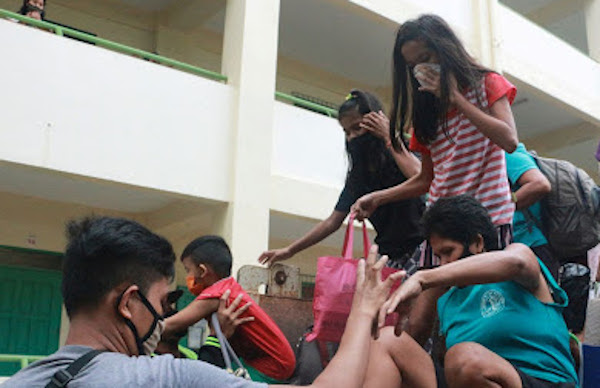
Typhoon Vongfong is hitting the Philippines, but concern is for coronavirus infections
The Typhoon Vongfong is pointing the Philippines heartland out. Hundreds of thousands of people must be evacuated, but the coronavirus pandemic is complicating efforts to move these people.
Because of Typhoon Vongfong threat, many people in the Philippines are heading to evacuation centres, but he problem of coronavirus infection is always there, since the centres cannot guarantee the correct social distancing. It is hard to enforce as a strong typhoon pummeled through its eastern provinces.
Typhoon Vongfong and the coronavirus threat: the Philippines brought to its knees
Typhoon Vongfong, the first to hit the country this year, intensified after slamming into the eastern Philippines on Thursday afternoon, packing winds of 155 kilometres per hour (kph) and gusts of up to 255 kph (158 miles per hour), the state weather bureau said in a bulletin.
Provincial and city governments, many of which are already strapped for resources due to the outbreak, are grappling with logistical and space issues, with an estimated 200,000 people needed to be moved from their homes in coastal and mountainous areas because of fears of flooding and landslides.
“This is really a nightmare for us here,” Ben Evardone, governor of the Eastern Samar province stated, “Our problem right now is where to squeeze our people, while making sure they practice social distancing”.
With an average of 20 typhoons every year hitting the Philippines, an archipelago of more than 7,000 islands, the challenges faced by stretched-thin local governments offer a grim preview of disaster response in the time of coronavirus.
Vongfong: the typhoon in the Philippines during the coronavirus
The typhoon was forecast to move northwestward and hit Luzon, the country’s largest island that includes the capital Manila, which remains on lockdown.
Images shared on social media showed the powerful typhoon bringing intense rain and violent winds in areas along its path, toppling trees, knocking out power and destroying homes.
In the town of Buhi in the province of Camarines Sur, hundreds of evacuees were given face masks before they were allowed in the evacuation centres.
Mark Anthony Nazarrea, a public information officer at Buhi, said the local government turned two more schools into temporary shelters to enable better social distancing.
There were no reported cases of the new coronavirus in Buhi, Nazarrea said, but “we want to minimise the risk”.
Classrooms that used to accommodate eight families during disasters are now housing only one to two families, he said.
The novel coronavirus has killed 790 people in the Philippines since the first local transmission was recorded in March, and infected close to 12,000.


